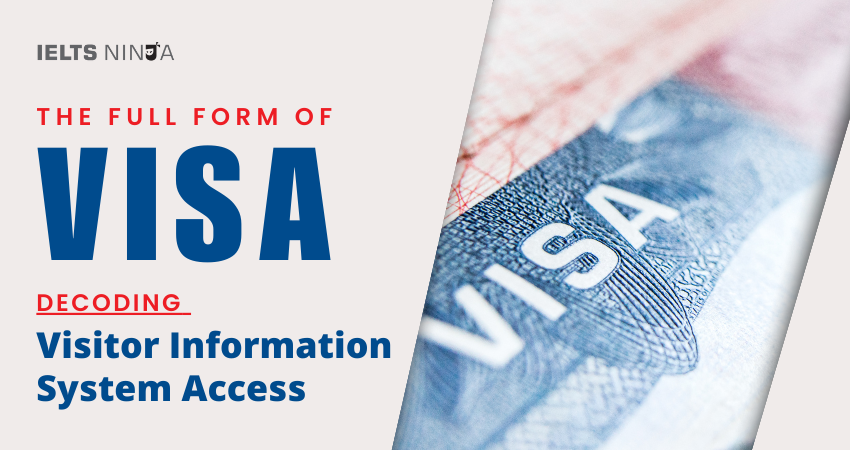It appears there might be some confusion regarding the full form of “VISA” While “VISA” is commonly associated with travel documents, it does not actually stand for “Visitor Information System Access”. Instead, “VISA” refers to a different concept:
VISA is a term associated with travel and immigration and stands for “Visa Information System Access”. Visas are official travel documents issued by countries to foreign nationals, allowing them to enter, stay, or travel within a particular country for specific purposes, such as tourism, business, work, or study. Here are key details about VISA (Visa Information System Access):
Purpose of VISA:
Visas serve multiple purposes, including:
- Regulation: Visas help countries regulate the entry of foreign nationals by specifying the purpose and duration of their stay.
- Security: They enable countries to screen travelers for security and public health reasons.
- Economic Contribution: They facilitate tourism, business, and international trade, contributing to a country’s economy.
- Cultural Exchange: Visas promote cultural exchange and international collaboration through programs like study abroad.
Types of VISAs:
Countries issue various types of visas based on the purpose of travel. Common visa types include:
- Tourist Visa: For leisure and tourism purposes.
- Business Visa: For conducting business activities, such as meetings, conferences, or negotiations.
- Work Visa: For employment purposes.
- Student Visa: For pursuing education or training.
- Residence Visa: For long-term residency.
- Transit Visa: For travelers passing through a country on their way to another destination.
Application Process for VISA:
To obtain a visa, travelers typically need to:
- Complete an Application: Fill out a visa application form, providing personal details, travel plans, and the purpose of the visit.
- Submit Documentation: Submit required documents, such as a passport, passport-sized photos, and supporting documents (e.g., invitation letters or proof of funds).
- Attend an Interview: In some cases, applicants may need to attend an interview at a consular office or embassy.
- Pay Fees: Pay visa processing fees.
- Wait for Processing: Wait for the visa to be processed, which can take several weeks.
Also Read: Best online IELTS coaching & training academy
Visa-Free Travel:
Some countries have agreements that allow citizens of certain countries to enter without a visa for short stays. This is known as visa-free travel. However, travelers must still meet specific entry requirements, such as having a valid passport or a return ticket.
VISA – Electronic Travel Authorization (eTA):
In some cases, countries have implemented Electronic Travel Authorization (eTA) programs, which allow travelers from certain countries to obtain travel authorization electronically before their trip.
Conclusion:
Visas are essential travel documents that regulate the entry and stay of foreign nationals in countries around the world. Understanding the visa requirements and obtaining the correct type of visa is crucial for travelers to ensure a smooth and legal entry into their destination country. Travelers should check the specific visa requirements and application procedures of the country they plan to visit before embarking on their journey.








